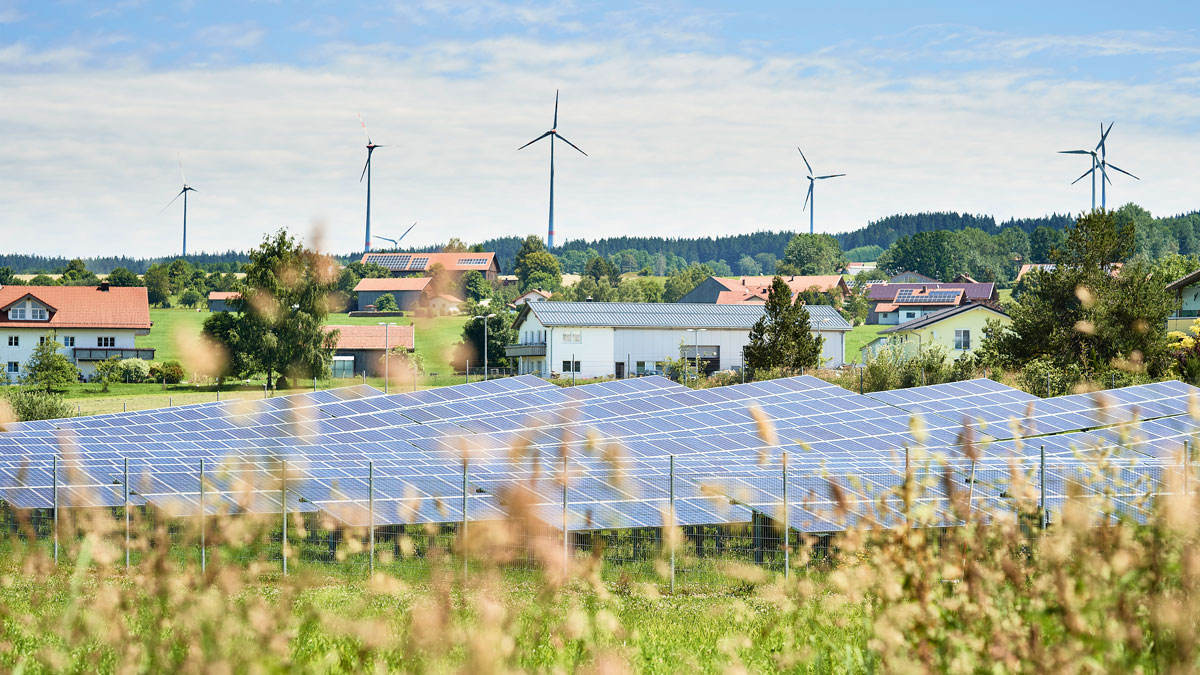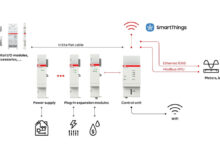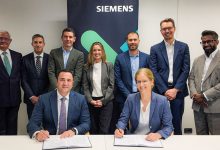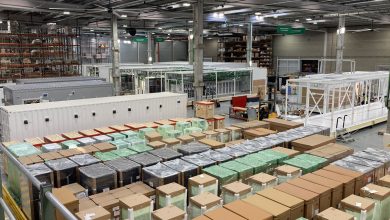Grid Edge – Where the Energy System of the Future Takes Off
Why the interface between the grid and consumers plays a key role in decarbonizing the energy system.
The transition to renewable supply presents the energy system with major challenges. Promising approaches to meeting these challenges are currently emerging at the grid edge – at the interface between the grid and consumers. Digitalization is enabling a new way for energy production, storage, and consumption to work together that benefits everyone involved.
Supplying power has followed the same principle for decades. Large power plants produce energy, and the energy reaches consumers through the grid. In the new energy world, where more and more power comes from renewable sources, this concept is being pushed to its limits. Decarbonizing the energy supply means far more than “merely” moving away from fossil fuels: It makes transforming the energy system unavoidable.
One reason is that renewable energy – wind and solar power – aren’t just produced in large plants. They are increasingly generated on a decentralized basis in millions of small or tiny plants located in industrial parks, on the roofs of single-family homes, and on farms in rural areas. In addition, power generation in photovoltaic plants and wind turbines is subject to extreme fluctuations. The sun doesn’t shine all the time, nor does the wind always blow with the same force. Conventional power plants, in contrast, supply energy constantly, day and night, winter and summer.
Towards a more flexible grid
The greater the proportion of wind and solar energy in the energy mix, the greater the fluctuation in power generation. At certain times, more power is produced than consumed, while at other times, demand is greater than supply. “In the power grid, generation and consumption must be in balance at all times,” says Michael Weinhold, CTO of Siemens Smart Infrastructure. The biggest challenge is to bring an increasingly fluctuating production into balance with a consumption, which also fluctuates. “If we want to use more electricity from renewable sources, we need greater flexibility in the energy system.”
In the future, it must therefore be possible to cover the demand for electricity when there isn’t a sufficient supply of wind and solar energy. To achieve this, flexible power plants need to step in with quickly controllable capacities. Alternatively, loads on the consumer’s side may need to be relieved so that less electricity is required. In addition, battery storage can provide some of the required flexibility.
But flexibility is also needed in the reverse situation: When photovoltaic plants supply much more power at noon on a lovely summer day than is needed, this “excess” energy must be used as sensibly as possible.
A basic requirement for increasing flexibility is making the grid’s status and the interaction between the connected components more transparent. It must be possible to digitally link and control photovoltaic plants, wind turbines, and other energy producers.
The same holds true for the consumer side: The more precisely the consumption of an industrial plant or a smart building can be predicted and also varied, the more flexible the energy system can be. “The goal is to have a smart system, where the power grid, producers, storage, and consumers work together mostly autonomously,” says Michael Weinhold.
More storage is needed
It’s clear that a system of this type requires additional energy storage capacity. On the grid level, we need storage systems that can output or input a lot of energy in split seconds to stabilize the grid, such as battery and flywheel energy storage units. Not to forget, more long-term storage systems are needed in addition to any existing pumped-storage power plants.
Storage solutions are relevant in the new energy world, and not just on the grid level. Companies and private individuals who produce their own electricity – the prosumers – benefit from ways of storing electricity as well. Prosumers operating wind and solar plants face problems similar to those of the grid operators, but on a smaller scale. Their plants produce excess energy at certain times, but they can’t cover their own demand at other times. Storage systems allow prosumers to use electricity more independently from its time of generation. They can therefore utilize more of their own energy – which is clearly an economic advantage. Moreover, they obtain a greater degree of autonomy and a more resilient power supply.
The search for ways to store and make the best possible use of electrical energy has moved beyond the power supply itself. With sector coupling, the sectors electricity, gas or heat sector are combined. In so called power-to-X processes, excess power is transformed into other forms of energy, such as heat or gas. These can either be used directly (e.g., for heating) or stored. At a later stage, the stored energy could be re-transformed into electric power. With the rise of electromobility, coupling the energy and mobility sectors is also becoming a focal point.
New technological approaches at the grid edge
This setup of smart grids, storage systems, and prosumers creates new ways to increase the energy system’s flexibility and reliability. Consequently, new opportunities arise for energy producers and grid operators as well as companies and private individuals to participate in new business models.
Many of these possibilities lie at the interface between the grid and the world of prosumers and consumers – the so called grid edge. “The grid edge is a new dimension that opens up when consumers, prosumers, energy markets and the smart grid interact,” says Michael Weinhold.
Here, at the grid edge, the relationships between consumption, production, and storage are being redefined, one might say. Facilitated by digitalization, energy flows are becoming more transparent and the complex interplay between production and consumption increasingly manageable.
Characteristic for solutions at the grid edge is that they cover different applications. Technologies can be combined modularly as needed. Below, some of them are presented.
Load management
Smart load management (Demand Side Management) gives grid operators the ability to directly influence power consumption when the demand for electricity is too high or too low or in case of bottlenecks in the grid. Ideal for load management are amongst others heating and cooling systems. Their load profiles can be slightly shifted without significant consequences.
The concept of virtual power plants aims at combining decentralized units in order to increase flexibility and enable participants to jointly market their energy. Production facilities, such as biogas plants, wind turbines, photovoltaic systems, and hydroelectric power plants as well as energy consumers, energy storage systems, and power-to-X plants can be interconnected. In theory, this is how any decentrally producing, storing, or consuming stakeholder in the energy market could become part of a virtual power plant. In practice, however, local regulatory circumstances set certain limits.
Microgrids
Microgrids – locally segregated smart grids that produce their own energy – can be used for different purposes. Autonomous microgrids cover their own energy demand permanently, which is functional in remote areas that lack a connection to the power grid. When connected to the grid, microgrids can provide grid services, for example, balancing out load peaks.
“We assume that the smart grid of the future will have a cellular structure, in which microgrids help to coordinate the balance between generation and consumption at the lowest level of the grid,” says Michael Weinhold. Microgrids increase local supply security and contribute to a more stable grid operation when combined with storage solutions.
eMobility
The number of electric vehicles is constantly growing. This poses a challenge to grids, because in the future considerable load peaks can occur when charging processes take place simultaneously. At the same time, eMobility also offers enormous opportunities for the power grid. If charged intelligently, electric cars turn into flexible consumers, and consequently ideal candidates for load management. For example, they can reduce the cost of a grid infrastructure expansion. In the future, electric vehicle batteries could serve as a power source when additional balancing power is needed in the grid. However, the development of the relevant technology (vehicle to grid) is still in an early stage.
New opportunities for all players involved
Smart systems that coordinate the production, storage, and consumption of energy create new opportunities for all players involved. They allow prosumers and consumers to make their buildings and industrial plants more energy-efficient, and make optimal use of the energy production on-site. Concepts such as load management and virtual power plants enable these players to participate in the energy markets. At the same time, they contribute to the smart, flexible, economical, and reliable power grid of the future, which is starting to grow at the grid edge.
Copyright: siemens.com/stories







